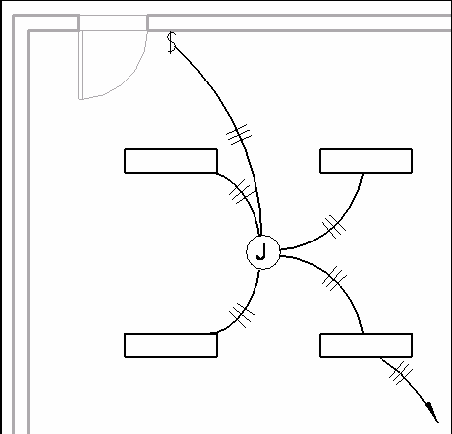Most terms used to identify objects in Revit are common, industry-standard terms. However, some terms are unique to Revit and understanding them is crucial to understanding the software.
- Damper: Used to control flow volume.
- Data Panel: Panels used to connect devices with connectors of System Type Data, Telephone, Security, Fire Alarm, Nurse Call, Controls, and Communication.
- Duct Mounted Equipment: Smoke detectors, steam generators
- Elbow: A bend or elbow type fitting
- Entry: Point at which fluid enters the system: louvers, grills, grates
- Equipment: Generic equipment
- Exit: Point at which fluid leaves the system
- Fan and System Interaction AHUs, inline fans
- Hood: Kitchen, lab or other exhaust hoods
- Junction: Intersection of 3 or more segments (tee, cross, wye)
- Junction Box: Wire management devices through which wiring is generally drawn through the device. As indicated in the image, the automatically generated wiring branches through the junction box.

- Normal: Devices such as receptacles, fire alarm components, and light fixtures.
- Obstruction: Anything that causes a pressure drop, such as an inline filter
- Panelboard: Used to connect devices/equipment with connectors with a System Type value of Power and to generate branch circuit type schedules.
- Switchboard: Used to connect devices/equipment with connectors with a System Type value of Power and to generate branch circuit type schedules.
- Transformer: Used to interconnect Panelboards and/or Switchboards of differing voltages.
- Transition: Shape or size change
- Undefined: No specific functionality
- Valve: Valves and similar accessories